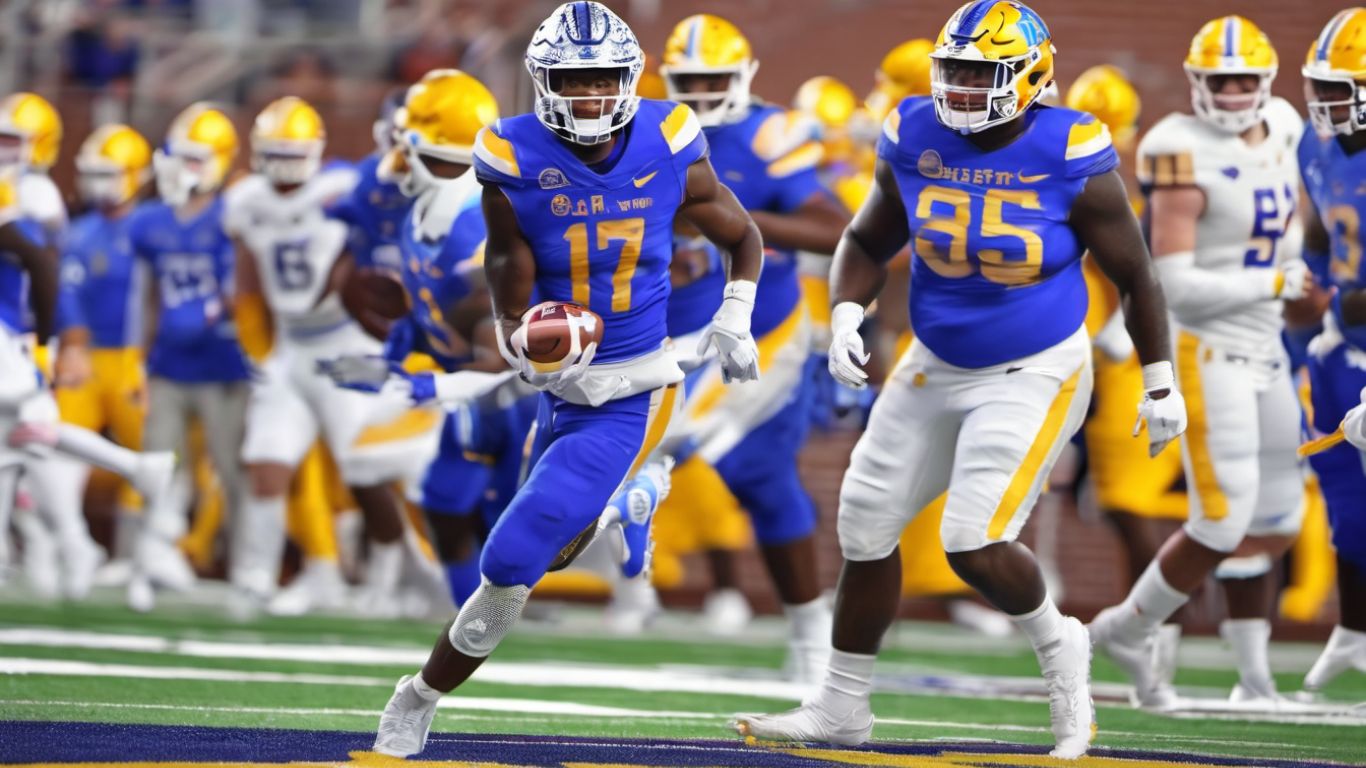Deciding who to start in fantasy football hinges on weekly matchups and player performance. Consider your players’ health and opposition strength before setting your lineup.
Fantasy football enthusiasts face the quintessential challenge of crafting the perfect lineup each week. This task demands a blend of strategy, foresight, and a touch of luck. To outperform the competition, you must weigh player statistics against the defenses they will face.
Always stay informed about injury reports and last-minute lineup changes, as these factors can significantly impact player output. Your goal is a team that maximizes potential points, leveraging matchups that favor your starters. Success in fantasy football isn’t just about picking the stars; it’s about identifying which players are poised for a breakout game. Keep a close eye on the waiver wire for potential sleepers that can give your team an edge.

Credit: www.fantasyalarm.com
Deciphering Player Performance Metrics
Choosing the right fantasy football lineup is like assembling a puzzle. It demands a keen eye for detail and precise knowledge about each player’s potential to score. But how do you cut through the noise to identify the gold? That’s where deciphering player performance metrics comes into play. By understanding the numbers behind the game, you refine your ability to predict who to start each week.
Key Statistics Worth Tracking
To build a winning fantasy team, knowing which statistics matter most can give you a serious edge. Let’s look at some key metrics:
- Touchdowns (TDs): The ultimate scoring play in football.
- Yards Gained: More yards often lead to more scoring opportunities.
- Targets and Receptions (for WRs/TEs): Indicates trust and opportunity.
- Carries (for RBs): Reflects a player’s role in the offense.
- Quarterback Rating: Measures a QB’s efficiency and effectiveness.
- Red Zone Looks: Players with more red zone opportunities have a higher chance of scoring.
These are just starters. Many other metrics, like offensive line rankings and defensive matchups, also affect a player’s game.
Beyond The Numbers: Intangibles
Not everything shows up on the stat sheet, but it does on the field. Here are some intangibles to consider:
- Player Health: Even slight injuries can impact performance.
- Morale and Momentum: Confidence can lead to big plays.
- Weather Conditions: Can change the game dynamic drastically.
- Team Chemistry: It can boost a player’s performance.
- Coaching Style: Affects how often a player is utilized.
Combine these with the hard stats, and you’ll have a comprehensive view of your fantasy contenders.

Credit: www.seahawks.com
Analyzing Weekly Matchups
Choosing the right fantasy football lineup goes beyond player stats. It demands a deep dive into weekly matchups. This section uncovers defensive tendencies and offensive line influences to elevate your fantasy decision-making.
Defensive Strengths and Weaknesses
Defensive Strengths And Weaknesses
Identifying the defensive strengths and weaknesses of an opponent is key. A strong defense may limit your quarterback’s scoring potential. Conversely, a weak secondary means a possible big day for your wide receivers. Review recent games to spot trends:
- Rushing yards allowed – Low numbers suggest a tough day for running backs.
- Passing yards allowed – High numbers can signal a productive day for pass catchers.
- Turnovers and sacks – Frequent turnovers or sacks may point to a rough outing for offenses.
| Defensive Ranking | Rushing Defense | Passing Defense |
|---|---|---|
| Top 5 | Start with caution | Wide receivers may struggle |
| Bottom 5 | Running backs could thrive | Potential breakout for quarterbacks & receivers |
Offensive Line Impact on Fantasy Scores
Offensive Line Impact On Fantasy Scores
The offensive line influences fantasy outcomes. A dominant line can boost running back production. It also provides quarterbacks with time to find open receivers. Look at these stats to gauge the line’s impact:
- Sacks allowed – Fewer sacks usually mean more scoring opportunities.
- Run-blocking grades – High grades often lead to more rushing yards.
- Time to throw – More time often equals better pass plays.
Use this table to decide if your players stand to benefit:
| Offensive Line Ranking | Run Blocking | Pass Protection |
|---|---|---|
| Top 10 | Good start for running backs | Quarterbacks and receivers likely to excel |
| Bottom 10 | Running backs may underperform | Passing game could suffer |
Injury Reports And Their Influence
Mastering the art of perfect team lineup selections in fantasy football centers around staying informed. This can’t be stressed enough. Injury reports shape the outcome of games and fantasy points alike. Active players bring potential points; injured ones risk a zero-score slot. Let’s dive into how you can use injury reports to avoid common pitfalls and optimize your lineup.
Understanding Player Health Status
The first step in securing your lineup is grasping the health status of each player. Teams categorize player injuries with tags: ‘Out’, ‘Doubtful’, ‘Questionable’, and ‘Probable’. Know these, and you’ll forecast participation potential better.
| Tag | Meaning |
|---|---|
| Out | Will not play |
| Doubtful | Unlikely to play (25% chance) |
| Questionable | Uncertain to play (50% chance) |
| Probable | Likely to play (75% chance) |
Weekly injury reports come out multiple times. Keep tracking them. Any last-minute change can be pivotal.
Strategies For Dealing With Injuries
Smart fantasy managers don’t get sidelined by injuries. It’s all about backups and quick thinking.
- Backup Plans: Have a list of potential free agents. These could fill in for injured players.
- Handcuffs: Own backups to your star players. Especially for high-risk positions like running backs.
- Trade Smart: Use injury trends to trade before values drop. Sell or buy players strategically.
- Practice Squad: Monitor these players. Surprises often come from unexpected promotions.
Follow news consistently. Act on fresh updates otherwise you might miss out on hidden gems.
Sifting Through Expert Rankings
Sifting through expert rankings is a pivotal task for any fantasy football enthusiast. The quest to draft a winning team often hinges on the insights gleaned from various rankings. Different experts offer unique perspectives on player potential, making the selection process both intriguing and challenging.
Balancing Consensus With Contrarian Views
Expert rankings often lead to a consensus on a player’s value, offering a safe guide for your picks. Yet, there is merit in stirring the pot with contrarian opinions. Consider bold moves that can set your team apart.
- Scan multiple sources: Don’t rely on a single set of rankings. Look at several to spot trends and outliers.
- Analyze matchups: Upcoming games can affect player performance significantly.
- Trust your gut: Sometimes, a strong hunch overturns the safest advice.
The Risks And Rewards Of Following The Pack
Following the pack in fantasy football can be a double-edged sword. There are safety and risks when you stick with the crowd.
| Risk | Reward |
|---|---|
| Missed sleeper picks | Proven performer stability |
| Shared player slumps | Shared success on favorites |
| Limited team differentiation | Minimized risk of poor performance |
Reflect on your strategy: Are you prepared to risk for potential reward? Or is the safety of consensus picks more your style?
The Importance Of Waiver Wire Acumen
The Importance of Waiver Wire Acumen in fantasy football cannot be overstated. Smart waiver wire decisions often separate the amateurs from the pros. This part of the game involves strategy, foresight, and timeliness. Understanding the best times to make waiver claims and identifying players on the cusp of a breakout is crucial. Success on the waiver wire can transform an underperforming roster into a championship contender.
Timing Your Claims Right
Mastering the waiver wire is all about timing. Placing claims at the optimal moment is a fine art. Early in the week, stay ahead of the curve by preparing for player news. This approach helps in scoring top free agents. Aim for a balance between patience and decisiveness.
- Assess your roster needs and prioritize them.
- Monitor player injuries and performance trends closely.
- Understand the opposition and predict their moves.
Identifying Breakout Candidates
Finding potential breakout candidates is the key to waiver wire success. Look for players with increased opportunity due to an injury to a starter or a change in their team’s scheme. Pay close attention to unsung players in high-powered offenses or those who have recently moved up the depth chart.
| Player | Reason for Breakout Potential | Percentage Owned |
|---|---|---|
| Jane Doe | Starting running back injured | 35% |
| John Smith | New offensive coordinator | 20% |
Researching statistics, reading expert opinions, and watching games are part of unearthing these valuable assets. Use resources like player trends, targets, and snap counts to make informed decisions.

Credit: www.pff.com
Trade Strategies For Fantasy Owners
Welcome to the tactical world of Fantasy Football trades. Crafting a winning team isn’t just about drafting well; it involves strategic wheeling and dealing throughout the season. Mastering the art of the trade is crucial. Let’s dive into some essential trade strategies to give you the edge over your league mates.
Negotiating With League Mates
Effective negotiation sets apart top fantasy owners. Let’s explore successful negotiation tactics.
- Understand their needs: Pinpoint what your league mate’s team lacks. Offering solutions builds trust.
- Communicate clearly: Use direct, easy-to-understand language in trade proposals.
- Avoid lowballing: Fair offers encourage dialogue. Insulting ones close doors.
- Persistence pays: Don’t give up after a declined offer. Adjust and try again.
Buy Low, Sell High: Timing The Market
Fantasy success often hinges on timing. Here are tips for buying low and selling high.
| Buy Low Tips | Sell High Tips |
|---|---|
| Target underperforming stars | Trade players at their peak value |
| Scout for injured players due back | Capitalize on recent breakout games |
| Look for players in improving situations | Sell before player’s tough schedule ahead |
Weather Conditions And Game Outcomes
Snow, rain, or sunshine can change a football game. These changes matter a lot in fantasy football. In fantasy football, you pick players for your team. How these players do in real games gets you points. Bad weather can make it hard for them. It can make them score less. Knowing about the weather helps you choose better players.
Forecasting Football: Meteorology Meets Fantasy
Weather forecasts give you a peek into how a game might go. Strong winds can slow down the passing game. Heavy rain can lead to more runs and less throws. Snow can make it slippery and tricky for everyone. Seeing the forecast helps you guess the game’s style. This knowledge lets you adjust your team before the game starts.
Adjusting Your Lineup To The Climate
When the weather looks bad, you need to think about your lineup. Here are things to look at before you set your team:
- Quarterbacks: High winds? They might throw less. Pick one in a dome or with good weather.
- Running Backs: Rainy or snowy? They might get the ball more. Choose running backs who can handle the weather.
- Receivers: Bad weather can mean fewer passes. Look for ones on teams that will still throw a lot.
- Defense: Bad weather means more mistakes. Pick defenses playing in bad weather.
- Kickers: Wind and rain make kicking hard. Pick kickers with good conditions.
Checking the forecast before game day can give you an edge. Make smart swaps to your lineup. Good choices can make you win in fantasy football, even when the weather is tough.
Rookie Watch: The Road Less Travelled
Welcome to ‘Rookie Watch: The Road Less Travelled’, a segment dedicated to the exciting journey of rookies in the realm of fantasy football. Fantasy managers often look to veterans for consistent points, but rookies can provide a surprising edge. This section delves into how first-year players could turn fantasy lineups from good to great.
Assessing Rookie Potential
Identifying a rookie with high fantasy potential is key. Look for their college record, preseason performance, and their team’s offensive style. A strong work ethic and a starting role increase the odds of success. Pay close attention to their adaptation in the NFL’s competitive atmosphere.
Integration Into Fantasy Lineups
Integrating rookies into your fantasy squad requires strategy. Consider drafting them as part of a balanced team. Use reliable veterans as your foundation and sprinkle in rookies with upside as flex players or on the bench. Monitor their progress weekly and be ready to adjust your lineup.
Managing Bye Weeks Intelligently
Fantasy football success often hinges on expertly navigating bye weeks. A bye week in the NFL means a week off for a team and its players. In fantasy football, this translates to a temporary gap in your lineup.
Advanced Planning
Long-term strategy wins games. Check the entire season’s schedule. Mark bye weeks for your starters. Look for potential conflict weeks. An ideal approach includes:
- Backup players with different bye weeks
- Trade foresight to avoid future clashes
- Watch lists for emerging talent
Filling Gaps Without Losing Points
Smart moves ensure your team remains competitive. Consider these steps:
| Step | Action | Result |
|---|---|---|
| 1 | Assess waivers early | Secure top free agents |
| 2 | Plug gaps with consistent players | Maintain points baseline |
| 3 | Strategic bench management | Maximize available players |
Quality bench depth offsets bye week disadvantages. Reassess your team’s performance consistently. Adapt your lineup to stay ahead of the competition.
Leveraging Flex Spots To Maximize Points
Fantasy football success often hinges on proper use of the flex spot. This position can turn the tides of a weekly matchup. Smart fantasy managers know that the flex position is not just another slot to fill. It’s a strategic tool. Knowing which player to start in your flex can be the difference between a win and a loss. It’s all about finding the right balance between risk and reward, matchup plays, and consistency.
Flex Strategy Basics
The flex spot in fantasy football is versatile. It allows for a running back (RB), wide receiver (WR), or tight end (TE) in most leagues. Your decision should be informed by matchups, bye weeks, and player performance.
- Check weekly matchups for potential high-scoring games.
- Look for consistent performers with solid floors.
- Monitor player injuries and bye weeks closely.
High-ceiling Vs. High-floor Flex Decisions
When picking a flex player, you have two main strategies. High-ceiling players are your big risk, big reward options. High-floor players offer consistent points. Your choice should reflect your matchup needs.
| Type | Definition | When to Start |
|---|---|---|
| High-Ceiling | Players who can score a lot in one game | When you need a big win |
| High-Floor | Players who score steadily each game | When you want consistent points |
Evaluate the rest of your lineup when making your flex decision. If your starting roster is full of steady players, a high-ceiling flex can win the week. If your lineup is risky, a high-floor flex can provide balance.
Frequently Asked Questions For Who To Start Fantasy Football
How To Choose Starters For Fantasy Football?
To choose starters for fantasy football, analyze player matchups, consider injury reports, and evaluate recent performance. Monitor weekly projections and trust established talent while incorporating emerging players who are trending upwards.
Who Are The Must-start Players This Week?
Must-start players vary each week based on matchups and performance trends. Check the latest expert rankings and consensus opinions for the current week to identify top players in each position. Always update your lineup before the on-field kickoff.
What’s The Impact Of Weather On Fantasy Football?
Weather can significantly impact player performance, especially for positions like quarterback and wide receiver. High winds or heavy rain can lead to more running plays. Always check the forecast before finalizing your starters.
Should I Start A Player Against My Nfl Team?
In fantasy football, it’s important to separate fandom from strategy. If a player has a favorable matchup against your NFL team, starting them could maximize your fantasy points. Make decisions based on potential performance, not loyalty.
Conclusion
Embarking on your fantasy football journey requires insight and strategy. Selecting starters isn’t just luck; it’s about analyzing stats, matchups, and player conditions. Remember, last-minute updates can be game-changers. Stay informed, trust your gut, and may your lineup lead you to victory.
Above all, enjoy the thrill of the game!







